Homburg-Kirrberg, Kath. Kirche Mariä Himmelfahrt
| Grundriss | |
 | |
| Außenansicht | |
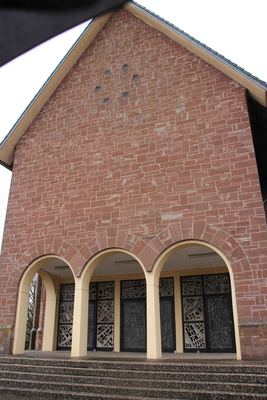 | |
| Innenansicht | |
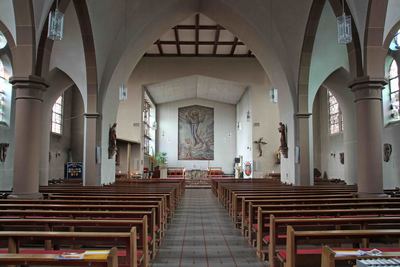 | |
| 2 | |

|
Ornamentale Komposition, im Rundfenster Symbol der Kreuzigung. Künstler unbekannt, 1956 Fenster im Seitenschiff, Antikglas/Blei/Schwarzlot |
| 3 | |

|
Ornamentale Komposition, im Rundfenster Taube als Symbol des Heiligen Geistes. Künstler unbekannt, 1956 Fenster im Seitenschiff, Antikglas/Blei/Schwarzlot |
| 4 | |
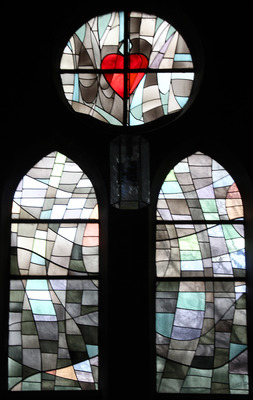
|
Ornamentale Komposition, im Rundfenster Symbol Herz. Künstler unbekannt, 1956 Fenster im Seitenschiff, Antikglas/Blei/Schwarzlot |
| 5 | |

|
Christus der gute Hirte, Lamm mit Siegesfahne, Opferlamm. György Lehoczky, 1956 Fenster im Querschiff, Antikglas/Blei/Schwarzlot |
| 6 | |
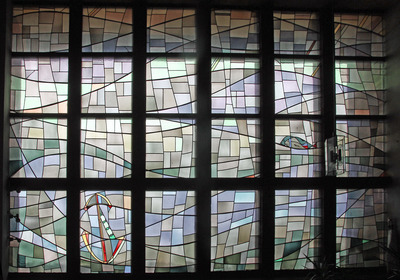
|
Ornamentale Komposition mit den Symbolen Anker und Fisch. Künstler unbekannt, 1956 Fenster im Chor, Antikglas/Blei/Schwarzlot |
| 7 | |

|
St. Johannes der Täufer. Bildtext: Bereitet den Weg des Herrn. György Lehoczky, 1956 Fenster im Querschiff, Antikglas/Blei/Schwarzlot |
| 8 | |
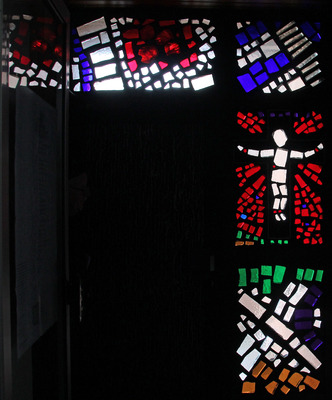
|
Ornamentale Komposition mit Motiv Kreuzigung. Alfons Gebhart, 1985 Lichtband im Seiteneingang, Betonglas |
| 9 | |

|
Ornamentale Komposition, im Rundfenster Symbol Kelch. Künstler unbekannt, 1956 Fenster im Seitenschiff, Antikglas/Blei/Schwarzlot |
| 10 | |
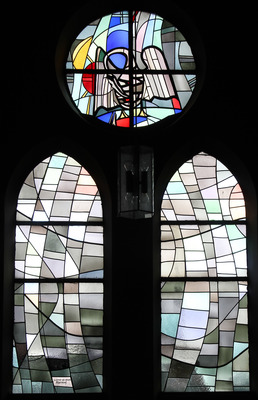
|
Ornamentale Komposition, im Rundfenster Symbol Pelikan, der seine Jungen nährt. Künstler unbekannt, 1956 Fenster im Seitenschiff, Antikglas/Blei/Schwarzlot |
| 11 | |

|
Ornamentale Komposition, im Rundfenster Symbol Krone. Künstler unbekannt, 1956 Fenster im Seitenschiff, Antikglas/Blei/Schwarzlot |
| 12 | |

|
Ornamentale Komposition. Alfons Gebhart, 1985 Lichtbänder im Eingang, Betonglas |